New Golf is the Answer; Which One is the Question
Filed under: Weekly test drives, Autos
By John Gilbert
A car-buyer who strolls into a Volkswagen dealership to check on the 2015 Golf compact hatchbacks can be excused for feeling curious, impressed, confused, and overwhelmed — all in the space of several minutes. It’s like attending a dinner party, noting that available entrees includes your favorites, such as steak, pork chops, lamb chops, halibut, walleye, and salmon– and then you realize you have to select only one.
At the VW dealership, examining the Golfs used to be pretty easy. If you were seeking basic transportation you’d pick the base car with that pretty dull but smooth 5-cylinder engine. If you wanted the hot one, you’d pick the GTI with jacked up power, suspension and trim. And if you wanted the ultra-high-mileage version, you chose the TDI turbo-diesel and set off to pursue 50 miles per gallon. For the 2015 model, all versions of the Golf are improved, and with an electric version, a wagon, and a higher high-performance model, the decisions get more confusing but also more rewarding.
First glance may not betray any major change. The car looks pretty much the same, although a discerning eye can detect some rounding off of the squarer corners to streamline the aerodynamics of the boxy vehicle. You can’t tell that it’s mounted on VW’s new MQB platform, which will underpin all VW sedan models and a few Audis as well, and sits an inch lower, 2 inches longer and a bit wider than the 2014 Golf. Or that the new car is built of 80-percent high-grade steel, making it lighter and with an obvious improvement in torsional rigidity.
That squarish 4-door shape houses 52.7 cubic feet of interior room, an increase over the 2014 model, and more than many midsize cars. Inside, the appearance is mostly black in, with a little satin-finish trim here and there. Pleasant and straightforward, something that will be prized by those, like me, who have grown weary of fake woodgrain and/or bright chrome-like trim that gathers reflections and driver’s-eye distractions.
It’s understandable that the top models, such as the GTI and TDI, might have neat interiors, but perhaps most impressive is the base car with the new TSI turbocharged 4. Not only does it have nicely bolstered bucket seats, and the soft-touch material on its no-frills dashboard, but it also has a 5-speed stick shift in basic form, and you only miss the preferred 6-speed until you live with the 5-speed and its wide-ratio ease of operation. Read more
Mustang, Golf, Genesis are Car of Year Finalists
Filed under: Weekly test drives, Autos
Much like the college football season, the nation’s top automotive journalists have finished the “regular season” of evaluating the newest 2015 cars and truck/utility vehicles, and now the focus is on choosing the “national champions.” The Volkswagen Golf, Ford Mustang, and Hyundai Genesis are the three finalists for 2015 North American Car of the Year, selected after each of 57 jurors distributed 25 points among their choices.
The top three vote-getting vehicles for North American Truck/Utility of the Year are the Ford F-150, the Lincoln MKC, and the Chevrolet Colorado.
Having earlier voted to cut the field of all-new or thoroughly redesigned vehicles down to 10 or 12, jury members voted to determine the top three, with a maximum of 10 points allowed to one, and only one, in each category and all 25 points required to be distributed. That vote determined the top three, which were revealed December 8 in Detroit.
After a mad scramble to drive and evaluate all the cars on the original and shortened lists, the jury members (including this writer) next reevaluate the three finalists in both categories, then distribute 10 points, which are compiled to determine both the 2015 North American Car of the Year and the North American Truck/Utility of the Year. The winners will be named at the Detroit International Auto Show on January 12, preceding the show’s first media preview day.
Ford Motor Company, with the Mustang and the F-150 and MKC, stands as the only one with a chance to duplicate the 2014 sweep by Chevrolet, which won both awards with the Chevrolet Corvette and the Chevrolet Silverado. Ford’s Mustang has been completely redesigned, adding independent rear suspension, and offering a new EcoBoost 2.3-liter 4-cylinder engine to join the 5.0 V8 and the 3.7-liter V6 and the 5.0-liter V8. Prices range from $25,000-$50,000, with all three engines delivering over 300 horsepower in the rear-drive coupe.
Volkswagen’s seventh-generation Golf retains its familiar boxy shape, but has several significant upgrades to its front-wheel-drive package in a variety of models that cover the compact segment as well as its price range ($20,000-$35,000). VW’s impressive new 1.8-liter turbocharged 4 replaces the boring and unloved 5-cylinder with more power and better fuel economy. Included in the Golf family is the TDI — turbo-diesel — which is a newly revised version of the already world-class 2.0-liter 4-cylinder diesel and can approach 50 miles per gallon. On top of those models is the GTI, a sporty version with the 2.0-liter turbo gas engine that has sportier suspension, wheels, tires, seats and interior appointments. Read more
Mustang Stampedes into Next 50 Years
Filed under: Equinox, Autos
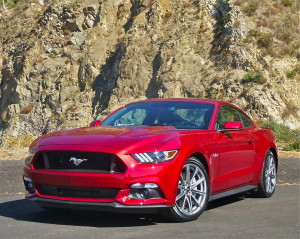
The 2015 Mustang has a lower, sleeker look covering all sorts of technical improvementsBy John Gilbert
By John Gilbert
The Ford Mustang takes the term “icon” to new dimensions. Amid very successful pickup trucks and various sedans and SUVs, the Mustang earns icon status by standing out as the very personality of Ford Motor Company. And for 2015, the Mustang takes its own image, as well as Ford’s, upward to new heights of styling, performance and technology.
The totally redone Mustang has an enormous responsibility, being the sixth generation of the car that first hit the streets of Dearborn in 1964. That’s a long time ago — 50 years ago, to be exact. And the new car seems to have reached all the high points befitting its 50th anniversary.
“Fast, fun and affordable,” is the way Mustang vehicle engineering manager Tom Barnes put it. I wasn’t sure if that was a new corporate motto or if Barnes was describing the combination of all the new Mustang’s attributes, but if it’s not the Mustang Motto, it should be. The Mustang will start in the mid-$20,000 range and run upward, depending on the restraint buyers show at the upgrade and option checklists.
Since its inception in 1964, the Mustang has grown bigger, then smaller, then almost disappeared, before being revived in the last decade as a retro model that brought everyone back to the heyday of its first and most classic years. For 2015 the evolution continues and the Mustang sets new standards as a sleeker, quicker and more maneuverable sporty coupe that is a little bit retro and a large bit contemporary, with a dose of Ford’s most futuristic EcoBoost technology.
Ford introduced its 2015 Mustang to auto media in Los Angeles, stressing it as a finished product more than simply for its improved power. But the two are intertwined impressively. Under that long and curvaceous hood you choose one of three engines. A surprising new EcoBoost 4-cylinder joins the returning V6 and the bolstered V8 in a versatile arsenal. All three engines reach or surpass 300 horsepower, yet promise economical operation through a pair of 6-speed transmissions, a Getrag manual, or the automatic, which has steering wheel paddles for a sporty touch on all applications.
The base engine is the 3.7-liter V6, with 300 horsepower and 280 foot-pounds of torque, while the top engine is the 5.0 V8, with its sophisticated chain-driven dual overhead camshaft design spinning to a whopping 435 horsepower and 400 foot-pounds of torque, with a top speed of 155 miles per hour. But the spotlight shines brightest on Ford’s newly redesigned EcoBoost 2.3-liter 4-cylinder, thoroughly upgraded and reinforced to handle the twin-scroll turbocharger’s force-fed demands. In the Mustang, it delivers 310 horsepower and an amazing 320 foot-pounds of torque. From a 4-cylinder.
“The new 2.3 has more horsepower than our V8 did 10 years ago,” said Barnes, pointing out the power is complemented by an advertised 32 miles per gallon.
“We had hundreds of people working on this Mustang for the last four years to make sure we had everything from the powertrain to the stiffer structure, to ride comfort, and to improve response and handling, as well as the appearance, inside and outside. We had a lot of input from people and a lot of debates and discussions, because we had to live up to the heritage of the car but also move forward.
“I think we absolutely nailed it.”
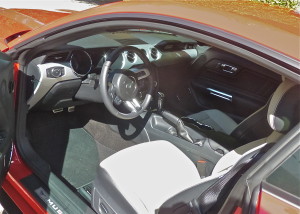
Interior choices are focused on driver’s command, and the base seats are supportive, if a cut below the GT’s Recaros.
Small engines that over-achieve always have been my preference, and the EcoBoost 2.3 proves that large displacement isn’t the only route to performance potency, while that potency and good real-world fuel-efficiency needn’t be mutually exclusive. German manufacturers such as Audi/Volkswagen, BMW and Mercedes all have 2.0 turbos as their primary base power, and the 2.3 EcoBoost proves that small-displacement, high-performing engines with great fuel economy isn’t an exclusive domain of the Germans.
When Ford first decided to go with the turbocharging technology it calls EcoBoost, it began with the 3.5-liter V6, built from the ground up to withstand the rigors of rapid surges of RPMs produced by turbocharging. The 2.3, meanwhile, first came to Ford with its smaller 2.0 brother from previous affiliate Mazda, when the two companies had some joint ventures. Refined through the years, they became known as the Duratec family of engines, with no connection to the smaller Sigma family that includes the 1.6, 1.3 and 1.0-liter units. Over the years, the Duratec as come a long way.
“The only thing this engine has in common with that original 2.3 is the placement of the cylinders and the displacement,” said Scott Makowski chief engine architect on the EcoBoost fours. “It’s pretty streamlined, with the turbocharger and direct injection mounted low, on the side, and the exhaust manifold integrated on the other side. It wasn’t cheap to do things like put a steel crank in it , but all along, we looked for anything we could do to strengthen the engine.”
That includes a die-cast (instead of sand-cast) block, and camshafts, a forged steel crankshaft, special piston rings and connecting rods, cooling jets on the aluminum pistons, and other modifications to reinforce the 2.3 for the rigors of being force-fed by the Honeywell-built turbocharger.
“We wanted 300 horsepower, and we got 310, with 320 foot-pounds of torque,” Machowski said. “We never chased horsepower at the expense of torque, and we never sacrificed gas mileage, horsepower or torque. We were able to get 240 horsepower out of it with a single-scroll turbo, with great power but no low-end. We went with the twin-scroll turbo because it has more pulses, which give faster response. Our emphasis was on getting the torque right because we knew the horsepower would come along later.
“The torque peak is 2,750 RPMs, but 90 percent of it comes in at only 1,750. The 310 horsepower means we got 137 horsepower per liter, which is one of the highest figures in the industry.”
The obvious competitors for the Mustang are the Chevrolet Camaro and the Dodge Challenger, both of which have just been reintroduced with huge power outputs. But all that power necessitates enormous pushrod engines — the. Camaro has an optional 7.0-liter V8, and the Challenger offers Hemi V8s of 6.2, 6.4 and a supercharged 6.2-liter with 707 horsepower. The price for those top-performing models is equally astronomical. That connects back to Ford’s “fast, fun, affordable” concept.
The V6 base car will start under $25,000 when it hits showrooms, and it will be the choice of many who love the style and substance and want to get a bargain first and foremost. The base price for the GT, with its neat-sounding 5.0-liter V8 reaches up to a $36,100, although you can find another $10,000 of options to add without difficulty. The 2.3 EcoBoost model steals the thunder again, however, with a starting price of $29,170, still armed with all the technical upgrades from the twin-scroll Honeywell turbocharger on up.
There are those who will demand a V8, just for tradition’s sake. Makowski, in fact, might have been one of them, until he proved himself perfectly suited to directing the new engine project, combining the new technology with an appreciation for Mustang heritage.
“I have an old V8 Mustang that I built,” said Makowski. “And while I like all three of these models, the 2.3 EcoBoost is my favorite. We haven’t chased horsepower at the expense of torque , and we haven’t chased power at the expense of fuel economy.”
New suspension at all four corners is highlighted by independent rear suspension, which replaces the solid-axle rear axle that has served the Mustang from the start. Engineers said that Ford considered both rear-end systems on the first Mustang, but chose the solid axle, and stuck with it. The improved steering, as well as the handling and power, must be driven to be appreciated. We proved it on our test runs up and down the San Gabriel Mountains east of L.A., driving the GT with its 5.0 V8 and the 6-speed stick on the way up, and then the 2.3 EcoBoost with the 6-speed automatic and its steering wheel paddle shift controls over similarly winding mountain roads on our return. We were impressed with both.
The GT’s V8 sound and punch is so good that I joked with Ford engineers that it essentially was a “1-speed” on those roads, because I was able to fly up around all the curviest mountain roads by simply leaving it in third gear. When approaching a tight curve, third could harness all the power sufficiently to slow the GT down entering the turn, yet lower-end torque was more than enough to pull us out of those curves with smoothly accelerating bursts, and letting it rev merely improved the sound.
I would also have liked to try the non-GT with the 2.3 EcoBoost and the stick shift, but in the available time, I also wanted to give the paddle-shifting automatic a strong try, so that’s what we chose. Shifting it manually and sailing around the similar curvy roads, the Mustang’s agility not only reflected the car’s improved weight distribution but, when we got to the bottom, its computer showed 31.4 miles per gallon. Imagine if I had driven it easy, rather than pushing it to handling limits.
A subtle element of fuel economy goes beyond miles-per-gallon figures. It is whether a car requires premium fuel, which often costs 30 or 40 cents more per gallon than regular, or whether it is merely recommended. Makowski didn’t make a big issue of it, but explained that the 2.3 EcoBoost was designed to run all day on 87 octane regular.
“We developed the 2.3 EcoBoost to run on 87 octane regular, all day,” he said. “You might get a little better horsepower with premium, but we made sure we met the minimum levels of performance on 87.”
That is just another plus for the Mustang-on-a-budget buyers. If you can blast it off the line once in awhile, and push it through turns or around cloverleafs, but have enough restraint to get 30 mpg, you can consider donating an extra $3 to $5 toward the car payment every time you fill the tank. And you could still fill up with premium every once in a while, such as for track day.
Most buyers may be unconcerned about the impressive technology that went into making the new Mustang world-class; they’ll be reeled in by the lure of the Mustang mystique and its great new look. That became clear when I was driving a gleaming white Mustang GT on a test drive, and I pulled into a strip mall parking area, not realizing I had been followed by an eager young fellow who parked and ran over to me.
“What kind of a car is this?” he asked, as I climbed out. I told him it was the new 2015 Mustang GT, and he couldn’t stop smiling and offering praise as he circled the car, gazing and shooting cell-phone photos every few steps.
Now, the 2015 Mustang has revised lines and a bit more sinister look compared to the current model, but it never occurred to me it looked like anything other than a Mustang. Nonetheless, spontaneous surveys are fascinating, and add evidence to the evaluation. For me, it confirmed that the new Mustang, with its lower and sleeker styling, balanced with the polished technology under the skin, is ready to go galloping off into an unbridled future.
Award-winning Genesis Gets New Beginning
Filed under: Equinox, Autos
By John Gilbert
Hyundai faced a pretty tall order when it revised its Genesis sedan for its second generation in the U.S. sports-luxury sedan class. After all, when the first Genesis hit these shores as a 2009 model, it won North American Car of the Year honors, and its engine was named to the Ward’s Top Ten engine list.
It was a bit sporty, but mostly a venture by the South Korean manufacturer to prove it could enter the luxury segment with a stately, if conservative, vehicle, coming out after the breakthrough midsize Sonata had startled the auto world by being distinctly not conservative.
The new Genesis, coming out as a 2015 model, is a stunning over-achiever in both technology and appearance and it seems that Hyundai decided to make its upscale sedan the company’s new icon — safely below the super-luxury Equus but a large stride ahead of the current Sonata. As an intriguing footnote, Hyundai came right back to introduce an all-new Sonata, which is also much refined, and resembles the new Genesis more than the current Sonata. Maybe Hyundai intends to have two halo cars.
If looks matter most in luring customers away from the Mercedes-BMW-Audi German trio and Japan’s Lexus, the Genesis moves boldly from functional to flashy by comparison. In first examination, I couldn’t forget that when Hyundai affiliate Kia hired Peter Schreyer away from Audi to coordinate some fantastic designs, such as the last Kia Optima, parent Hyundai suggested that Schreyer take over as design chief for the whole operation, meaning both brands. If that makes it less of a coincidence than Hyundai might suggest, the Genesis grille is a stylish new shape, sort of a wide shield that bears a resemblance to the front-dominating grille on every Audi sedan.
The difference is enough, of course, but it wears well on the Genesis, tapering up from the bottom to catch the contour that comes off the headlights in a stylish juncture that makes the entire front end seem wide and impressive. From the side, the Genesis sweeps back along an upper character line that runs just under the window sills and incorporates the door handles.
The roofline tapers down and then kinks forward, not unlike the BMW luxury sedans, and at the rear, well, it’s back to resembling the Audi sedans the way the horizontal taillights catch that character line and send it across under an integrated spoiler.
“We pulled the cabin rearward,” said John Krsteski, design manager of the Genesis. “The car is wider, too, and has a striking character feature. The grille is shaped like a winged hexagon.”
A hexagon, of course, has six sides, and if you count the gentle curve at the top of either side of the grille as two, then it could transform itself from a winged four-sided opening to a winged six-sided thing. “I can’t tell you how many sketches we did on the rear end,” Krsteski added. “We pulled the rear corners back and we did hundreds of different sketches on the taillights.”
Back when the new Genesis was introduced at The Sanctuary in Phoenix, it was made clear that Hyundai proved it could build comfortable and smooth luxury sedans with the first Genesis and the Equus, but Hyundai officials also acknowledged that the company still had what it calls a “perception gap” that separates it from BMW, Mercedes or Audi. As for Lexus, Hyundai’s luxury sedans started being sold cheaper than Toyota’s prize upscale sedans. The new models will sell for about the same price as the comparable Lexus cars, and is aimed at closing the perception gap as quickly as possible by offering more value for the money. It may take longer for the Equus to close the premium gap on the BMW 7-Series, Mercedes S-Class and Audi A8, so Hyundai is aiming to do it with the Genesis, aimed at the BMW 5-Series, Mercedes E-Class, and Audi A6.
Hyundai officials stress that it isn’t something that can simply be achieved, but must be engineered into the new car. With that, the new Genesis bristles with technology and refinement when compared to the award-winning current car. It rides on a new platform, nade significantly more rigid for handling and crash-performance with some aluminum and an increased amount of over 51 percent high-grade steel. At that, the body is only 0.2-inches longer overall at 196.5 inches, on a wheelbase that measures 3 inches longer at 118.5. At 74.4 inches wide and 58.3 inches tall, it is both wider and lower. That means shortening the overhangs front and rear by pushing the four wheels out closer to the extremities and stretching that sleek sheetmetal to cover it.
Inside, all the goodies now expected of luxury sedans abound, such as lane-departure warning, lane assist to keep you inside those lines, Google connectivity, and an impressive all-wheel-drive system called HTRAC. There are also all sorts of settings for sport, eco, snow, and normal — virtually any situation a driver can encounter. Improved seats and attention to detail on all the soft-touch dashboard and door panel material.
Engines are the revised 3.8-liter V6 Lambda, or the upgraded 5.0-liter Tau V8, which is enlarged as the replacement for the award-winning 4.6. The Tau V8 has 420 horsepower through its driven rear axle, while the Lambda V6 delivers 311 horsepower and can run the AWD system.
The potency of the aluminum V8, with direct injection and dual variable valve-timing and those 420 horses, will be the favorite of the power-hungry or the rear-drive traditionalists. And it is an impressive package, with its homebuilt 8-speed automatic transmission, at $51,509. It rises to $55,700 by adding the Ultimate package, which gives you a premium navigation system with a 9.2-inch high-def display, a 17-speaker Lexicon audio, continuously adjusting damping control, heads-up display, and dual vent control with CO2 sensors, plus a power trunk lid.
Now, the power trunk lid is something I need to test more. Ford brought out the idea on the 2014 Escape, where someone carrying arms-ful of groceries can, with the key fob still in pocket or purse, can sweep a foot under the rear bumper and the tailgate magically opens. On the new Genesis, you merely have to be standing by the rear end of the car with the fob in your pocket and the trunklid pops open. I suggested that might be a problem if someone was merely hanging out back there and the trunk kept opening.
For significantly less money, starting under $40,000, the Genesis with the V6 and all-wheel drive will be the clear choice for those living in the winter-driving belt. It also runs through the 8-speed automatic, and its HTRAC was demonstrated graphically out in the desert, where it was placed on a portable set of rollers under three of the tires, meaning traction could only get through to the fourth.
The system, we’re told, uses electro-mechanical control of its actuator, a worm-shaft with its own clutch to control torque. The system monitors all four wheels, of course, and for the purpose of our demonstration, on startup the right front, and both rears, might have spun merrily on their rollers, but with HTRAC, the torque is sent to the left front, the only wheel with traction, and the Genesis launches straight ahead.
The HTRAC directs a 40/60 front/rear split in normal circumstances, but can adjust for up to a 90/10 split in slippery conditions, or switch 100 percent of the power to the rear wheels during Eco highway cruising. The Intelligent Drive system on Normal sets the throttle and shift schedule for decent response and efficiency for average driving. In Sport, the system adjusts to sportier response and shift points. In Snow, throttle response is reduced to lessen the risk of wheelspin on starting up.
The sophisticated safety system includes emergency braking aids that apply full braking force if a crash is detected as imminent from 5-50 mph. From 50-112, you get a collision warning and partial braking force. It’s the same in revers for smart cruise, which paces the car ahead and will even make a complete stop if the car ahead stops in your path — then it will start up again when the car ahead starts, and regain your interval and pace.
Hyundai is calling the new design of the Genesis “Fluidic Sculpture 2.0” and indicates it will establish guidelines for future Hyundai vehicles. With the Sonata following the look, that plan is evident. On the Sonata, it may look more conservative, but on the Genesis, it is luxury with a flair, turning a nice, conservative design into something far more dynamic.
New Challenger Power: Excessively Sublime
Filed under: Equinox, Autos
By John Gilbert
If you can’t tell by the “Sublime” paint job that is close to glow-in-the-dark green, then the little Superbee medallion on both flanks of the 2015 Dodge Challenger should put you on full alert: The Ponycar War just escalated.
The big news in the hot, fun, halo performance-car segment is that the new Mustang will be thoroughly restyled for 2015 with independent rear suspension and a high-tech EcoBoost engine option, plus a Shelby GT500 model with 500 horsepower, while Chevrolet is countering by blessing the new Camaro with a Corvette engine option with 505 horsepower as the $75,000 Z-28. What could Dodge do with its 2015 Challenger to avoid being left behind — literally and figuratively?
Plenty, as it turns out. Faced with higher stakes in the three-ponycar battle, which began back around 1970 when they were the stalwart performers in the Trans-Am road-racing series, the rejuvenated Chrysler group dedicated Dodge as its high-performance weapon, and Dodge engineers came through with bone-jarring power combined with clever technology to send the new Challenger off to battle well-armed. Speaking of the small group called “standard specialty segment,” and which I call future-retro ponycars, many might think it consists only of expensive toys, with rear-wheel drive that negates a lot of winter-driving use.
But consider that the segment sold 430,000 units last year, which is 10 percent more than in 2009, and it is projected to grow 42 percent in the next five years. The Challenger was reintroduced five years ago, and while its sales doubled from 2009-2013, it set a sales record last year, when it should have been fading as a fifth year vehicle. The new car should render all current records obsolete.
To the uninitiated, the new Challenger won’t look all that different from the current Challenger. But to the discerning eye, the revised grille and other subtle touches are remindful of the 1971 Challenger, but even at the height of muscle cars, no ponycar — and no hot sedan, for that matter — has had what lurks under the hood of the new Challenger. For openers, the Challenger starts with the very competent 3.6-liter V6, and steps up to the 5.7-liter Hemi V8, which takes the V6‘s 305 horsepower up to 375, coupled with 410 foot-pounds of torque in a stick-shift R/T version.
Leaping above the R/T is the R/T Plus, with a 6.4-liter Scat Pack model, which has 485 horsepower and 475 foot-pounds of torque through a six-speed manual or eight-speed automatic. That’s the one with the Superbee festooned to the sides, that cartoon symbol of Dodge and Plymouth power from over 40 years ago. Ah, but that’s not all. Remember, the new Mustang’s Shelby version is rumored to be about 500 horsepower, and Motor Trend did a cover story on the Z-28 Camaro, claiming 505 horsepower and 481 foot-pounds of torque. Dodge’s SRT — for Street and Racing Technology — high-performance team had a loftier objective: 700 horsepower.
They made it, with some to spare. They came up with a 6.2-liter Hemi V8, reinforced every component, and chose not to use direct injection, because forced injection was determined to be better for this project. They fitted a twin-screw supercharger on top to blast an air-fuel mixture into the cylinders and ultimately achieveed an incredible 707 horsepower, with 650 foot-pounds of torque. That engine comes in the top-performing package, which will be called the Hellcat, and we can expect it to rip off 0-60 times of around 4 seconds. Read more


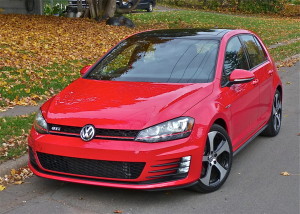
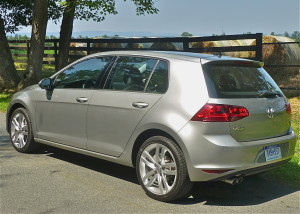
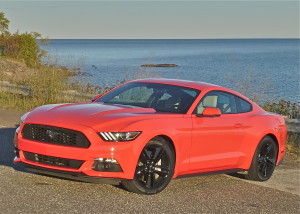
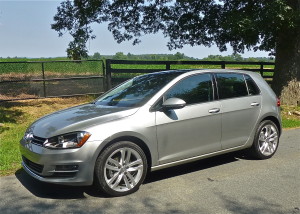
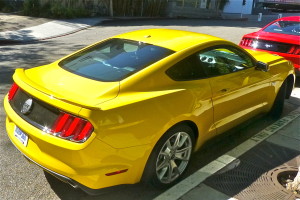
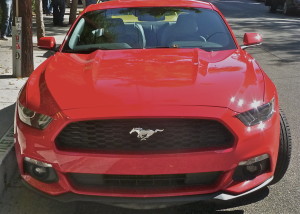
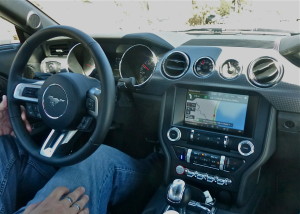
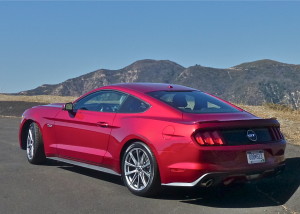
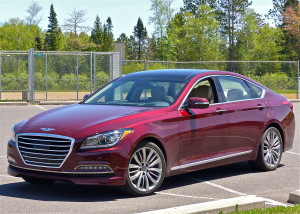
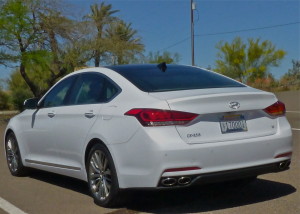
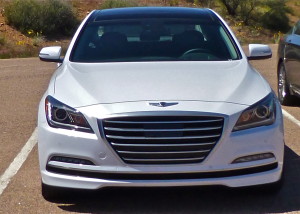
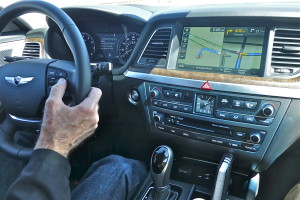
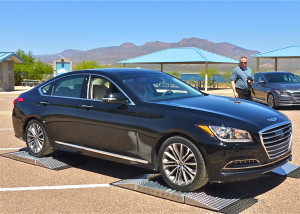
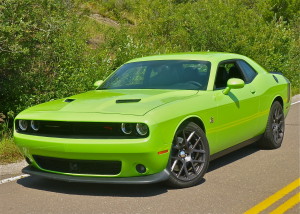
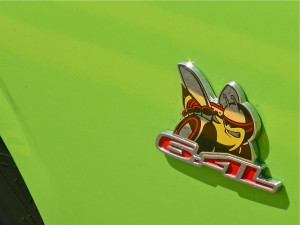
 John Gilbert is a lifetime Minnesotan and career journalist, specializing in cars and sports during and since spending 30 years at the Minneapolis Tribune, now the Star Tribune. More recently, he has continued translating the high-tech world of autos and sharing his passionate insights as a freelance writer/photographer/broadcaster. A member of the prestigious North American Car and Truck of the Year jury since 1993. John can be heard Monday-Friday from 9-11am on 610 KDAL(www.kdal610.com) on the "John Gilbert Show," and writes a column in the Duluth Reader.
John Gilbert is a lifetime Minnesotan and career journalist, specializing in cars and sports during and since spending 30 years at the Minneapolis Tribune, now the Star Tribune. More recently, he has continued translating the high-tech world of autos and sharing his passionate insights as a freelance writer/photographer/broadcaster. A member of the prestigious North American Car and Truck of the Year jury since 1993. John can be heard Monday-Friday from 9-11am on 610 KDAL(www.kdal610.com) on the "John Gilbert Show," and writes a column in the Duluth Reader.